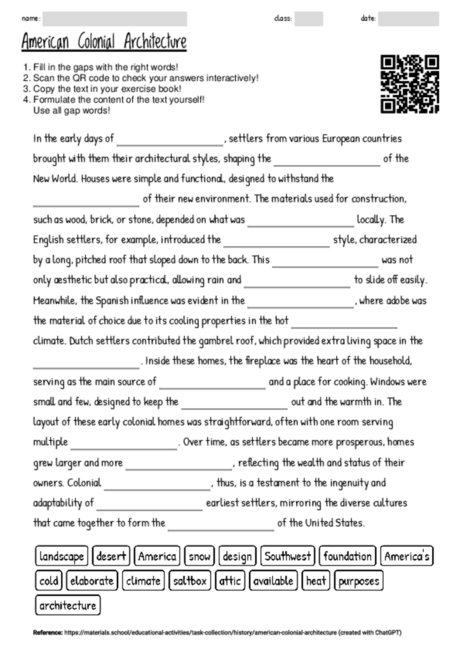American Colonial Architecture
The use of cloze texts, such as the one created on early colonial architecture in America, serves several educational purposes in teaching history and cultural studies. Firstly, it actively engages students in the learning process, requiring them to recall and apply knowledge to complete the text. This method can enhance memory retention and understanding of the topic. The cloze format also encourages students to deduce meanings and contexts from the provided clues, fostering critical thinking and comprehension skills. Additionally, by focusing on key terms, students can better grasp the essential aspects of early colonial architecture, including the influences of different European settlers, the materials used, and the practical considerations that shaped the design of homes. This approach not only aids in learning historical facts but also in understanding the interplay between geography, culture, and technology in architectural development. The text is accessible for the intended age group, with straightforward language and clear examples, making complex concepts easier to digest. Furthermore, by highlighting the adaptability and resourcefulness of the early settlers, the cloze text can inspire discussions about how environmental and cultural factors influence human settlements and architectural styles. Lastly, the text's adaptability allows it to be used in various teaching phases, from introducing new information to reviewing or reinforcing previously learned material, making it a versatile tool in the educational repertoire.

